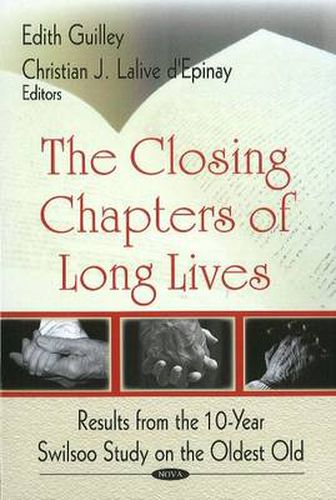Readings Newsletter
Become a Readings Member to make your shopping experience even easier.
Sign in or sign up for free!
You’re not far away from qualifying for FREE standard shipping within Australia
You’ve qualified for FREE standard shipping within Australia
The cart is loading…






Book & CD. One of the most striking demographic changes over the last century in Western countries has been the rapid growth, both absolute and relative, of the oldest-old population, to such an extent that living beyond the age of 80 years constitutes a new stage of life. But what is life like after 80? Rather than scrutinizing the pathologies of very old age, this book enquires into the normal aging of the oldest old, their health trajectories, their socio-demographic inequalities; it analyses their daily life, including their social relationships, social support, and activities, and observes how the oldest old adapt to the multiple stresses and challenges of very old age. The book reports major results obtained from Swilsoo, a long-term longitudinal study based on two cohorts of octogenarians. The two cohorts were assessed on an approximately yearly basis, the first for 9 waves from 1994 to 2004, with 340 participants at inception, and the second for 5 waves from 19v9 to 2004, initially with 377 participants. The book demonstrates that many common stereotypes concerning the oldest old are false. For examples, their main shared characteristic is not sickness, but frailty, which affects them in different ways. A long life does not necessarily culminate in dependence. Dependence is a risk – especially among persons of lower socio-economic status – but not an ineluctable outcome. It also helps to bring out the importance of social and psychological resources in the lives of the oldest old. Although multiple stresses such as negative health-related changes or self-reported bereavements of a loved one often occur in the life of the elderly and affect their health and well-being, the very old can take advantage of various resources or adjustment mechanisms to help preserve their well-being and robustness. The book shows for instance that the preservation by the elderly of a positive and active role within the family is a boon to their health and that the continuation of leisure activities or the effective use of psychological resources counters the negative effects of frailty on well-being.
$9.00 standard shipping within Australia
FREE standard shipping within Australia for orders over $100.00
Express & International shipping calculated at checkout
Book & CD. One of the most striking demographic changes over the last century in Western countries has been the rapid growth, both absolute and relative, of the oldest-old population, to such an extent that living beyond the age of 80 years constitutes a new stage of life. But what is life like after 80? Rather than scrutinizing the pathologies of very old age, this book enquires into the normal aging of the oldest old, their health trajectories, their socio-demographic inequalities; it analyses their daily life, including their social relationships, social support, and activities, and observes how the oldest old adapt to the multiple stresses and challenges of very old age. The book reports major results obtained from Swilsoo, a long-term longitudinal study based on two cohorts of octogenarians. The two cohorts were assessed on an approximately yearly basis, the first for 9 waves from 1994 to 2004, with 340 participants at inception, and the second for 5 waves from 19v9 to 2004, initially with 377 participants. The book demonstrates that many common stereotypes concerning the oldest old are false. For examples, their main shared characteristic is not sickness, but frailty, which affects them in different ways. A long life does not necessarily culminate in dependence. Dependence is a risk – especially among persons of lower socio-economic status – but not an ineluctable outcome. It also helps to bring out the importance of social and psychological resources in the lives of the oldest old. Although multiple stresses such as negative health-related changes or self-reported bereavements of a loved one often occur in the life of the elderly and affect their health and well-being, the very old can take advantage of various resources or adjustment mechanisms to help preserve their well-being and robustness. The book shows for instance that the preservation by the elderly of a positive and active role within the family is a boon to their health and that the continuation of leisure activities or the effective use of psychological resources counters the negative effects of frailty on well-being.